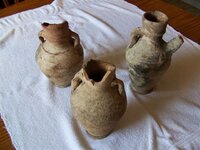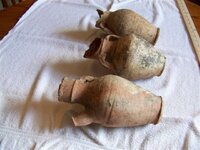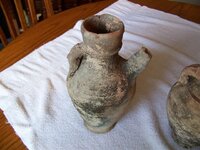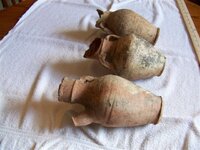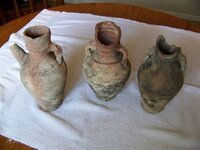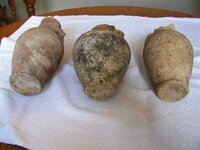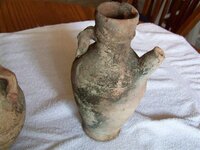tallahassee420
Newbie
- May 17, 2011
- 1
- 0
hey guys, me and a buddy was digging near an old Fort site in the middle Ga. area near Dublin Ga. next to the Oconee River , this area was used by the Indians and also was used befor the 1700's by the Spanish trading with the indians. Next weekend we will go back to dig around this area to see what we come across. Found the very edge of one of the broken jars on the edge of a old tree hole, Started to dig around and found the other two. Going to take the metal detecot out next week if i can, But i desperatly need info on these jars. i have never seen anything like these before from my area or even in the south east. I think they are very Early settler, but i have no clue. checkem out and hollar back at me if you know anything at my email. [email protected]
These guys are about 9 1/2 inches tall ... one is really nice,,,, COME ON GUYS HELP ME OUT ON THIS ONE>>>>>>.
These guys are about 9 1/2 inches tall ... one is really nice,,,, COME ON GUYS HELP ME OUT ON THIS ONE>>>>>>.


